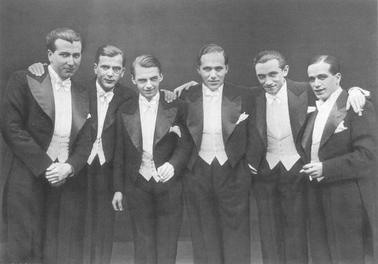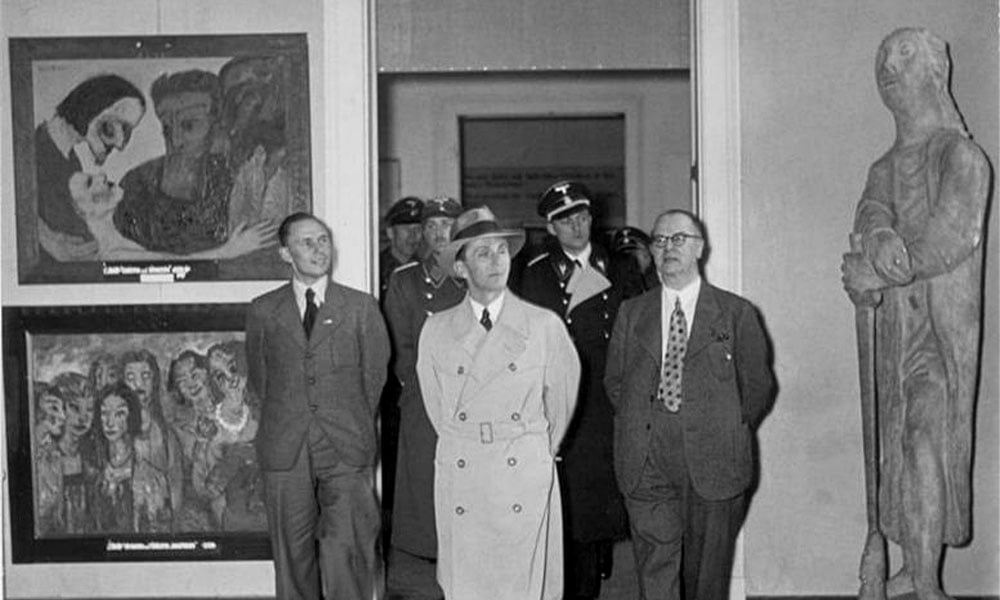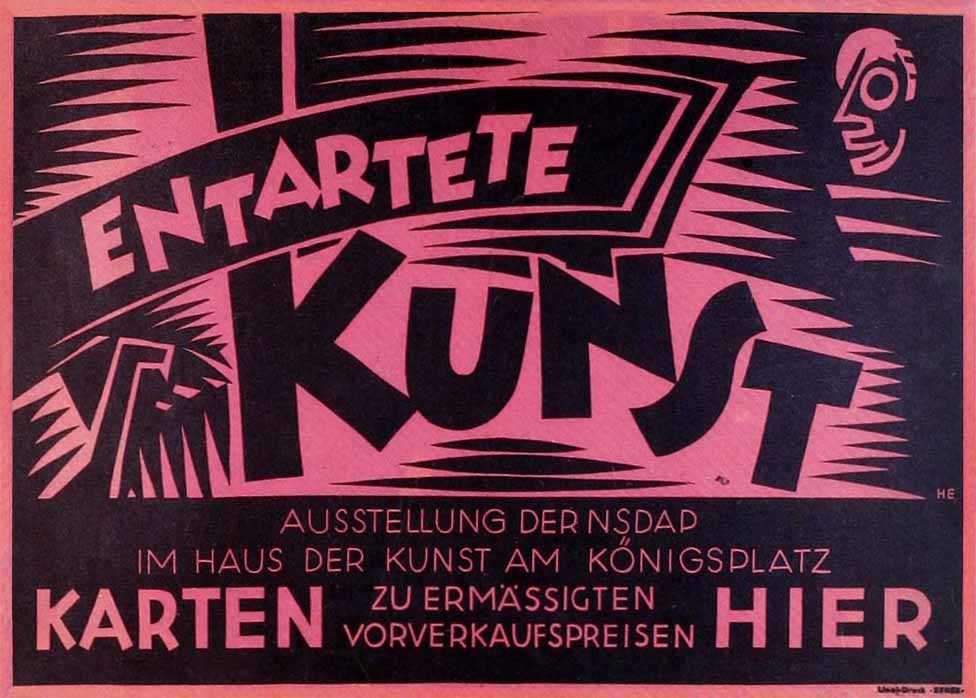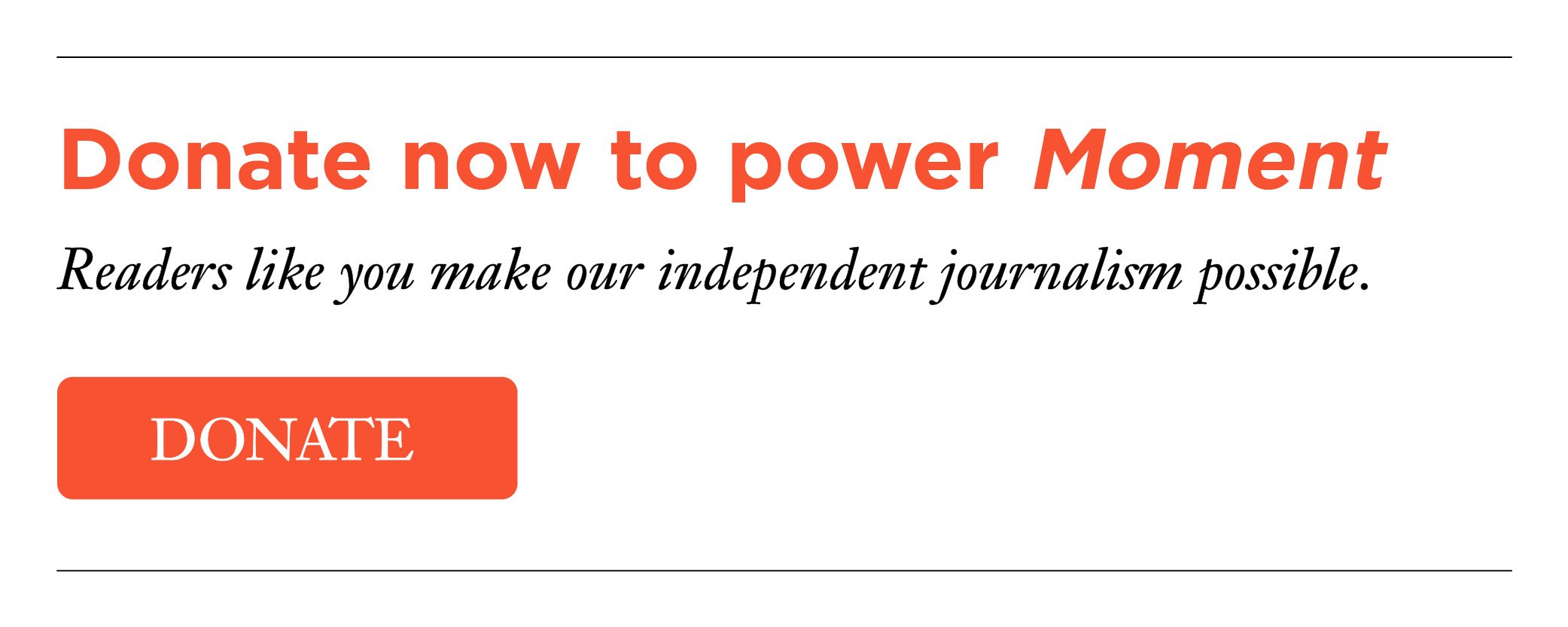Music, at its core, is freedom. It cannot be caged by ideology or controlled by propaganda. The Nazis understood that, which is why they tried so desperately to suppress it, to twist it, to erase it. And yet, even in those darkest of times, music found a way to persist—not as a passive relic, but as an act of defiance and expression, a refusal to be silenced.
And now, as political forces seek greater control over cultural institutions, as artists face increasing pressure to align with a particular political outlook, as history itself is rewritten to suit the needs of power, we must ask ourselves: What happens when art is subverted as a tool to promote political ideology?
The war on jazz in Nazi Germany was never just about music. It was about control—of thought, of identity, of expression. It was a warning then, and it is a warning now.
“Strictly prohibited is the use of instruments alien to the German spirit (so-called cowbells, flexatone, brushes, etc.) as well as all mutes which turn the noble sound of wind and brass instruments into a Jewish-Freemasonic yowl.”
Before the Nazis came to power, jazz—the pop music of its day—thrived in Germany. During the post–World War I era, the democratic Weimar Republic of the 1920s and early 1930s fostered a climate of artistic freedom and cultural experimentation. Jazz emerged as a symbol of modernity, liberation and cosmopolitanism, finding enthusiastic audiences in Berlin and beyond. American jazz greats like Louis Armstrong, Sidney Bechet and Coleman Hawkins were welcomed and celebrated. Yet even in this era of openness, jazz was already entangled in the racial and cultural anxieties of the time. Many Germans perceived jazz as a hybrid product of two marginalized groups: Black Americans and Jews.
In 1930, the respected German music journal Melos asserted: “The foundations of jazz are the syncopations and rhythmic accents of Negroes; these have been modernized and given their present form by Jews, mainly New York Tin Pan Alley Jews,” referring to the music publishing hub that produced songs by Irving Berlin, George and Ira Gershwin and others. “Jazz is Negro music, seen through the eyes of these Jews.”
While we’ll never know what would have happened had Hitler never taken power, Germany’s contribution to jazz during this time is usually overlooked. The first university to teach jazz wasn’t in the United States—it was at the Hoch Conservatory in Frankfurt, Germany in 1928. Groups such as the Comedian Harmonists, a vocal ensemble of five singers, helped to popularize jazz-infused harmonies across Europe. Their story was later turned into the Broadway musical Harmony.

Comedian Harmonists in 1930 (from left: Robert Biberti, Erich Collin, Erwin Bootz, Roman Cycowski, Harry Frommermann, Asparuh “Ari” Leschnikoff)
Sadly, the Nazis would disband the group because three of its members were Jewish. And the golden era of jazz in Germany would soon be crushed.
When Hitler rose to power, jazz music became a target. The Nazis despised it not only for its Jewish influences but also because they saw it as part of a broader cultural “contamination” led by Black and Jewish artists. This condemnation wasn’t limited to music. The Nazis used the term Entartete Kunst—“degenerate art”—to label modern art they deemed un-German, Jewish or communist. Expressionism, Cubism, Dadaism and other avant-garde movements were seen as threats to the regime’s vision of traditional German values and were systematically censored, ridiculed, or destroyed.)
Joseph Goebbels, the Nazi minister of propaganda, officially labeled jazz “degenerate music” and, often referred to it with deeply racist and antisemitic slurs, including “Americano n***** k*** jungle music.” The Nazis imposed strict regulations on jazz performances, implementing absurdly specific decrees, as recalled by Josef Škvorecký in the introduction to his 1967 novella The Bass Saxophone. “Jazz was a sharp thorn in the sides of the power-hungry men, from Hitler to Brezhnev, who successfully ruled in my native land,” says the Czech-Canadian author, recounting from memory ten strict missives issued by a Nazi gauleiter “as binding on all local dance orchestras during the Nazi occupation of Czechoslovakia.” Here are the first five:
-
- Pieces in foxtrot rhythm (so-called swing) are not to exceed 20 percent of the repertoire of light orchestras and dance bands.
- In this so-called jazz type repertoire, preference is to be given to compositions in a major key and to lyrics expressing joy in life rather than Jewishly gloomy lyrics;
- As to tempo, preference is also to be given to brisk compositions over slow ones (so-called blues); however, the pace must not exceed a certain degree of allegro, commensurate with the Aryan sense of discipline and moderation. On no account will Negroid excesses in tempo (so-called hot jazz) or in solo performances (so-called breaks) be tolerated;
- So-called jazz compositions may contain at most 10 percent syncopation; the remainder must consist of a natural legato movement devoid of the hysterical rhythmic reverses characteristic of the barbarian races and conductive to dark instincts alien to the German people (so-called riffs);
- Strictly prohibited is the use of instruments alien to the German spirit (so-called cowbells, flexatone, brushes, etc.) as well as all mutes which turn the noble sound of wind and brass instruments into a Jewish-Freemasonic yowl (so-called wa-wa, hat, etc.).
The Nazis also banned the importation of any so-called Jewish music from abroad, but their censorship was inconsistent. Saxophonist Frankie Trumbauer’s music was prohibited, according to journalist Mike Gerber’s Jazz Jews, because Nazi officials mistakenly believed he was Jewish, while Artie Shaw’s music escaped the ban because they incorrectly assumed he was the son of the non-Jewish Irish playwright George Bernard Shaw. These misjudgments highlight the regime’s haphazard and deeply flawed efforts to control cultural expression.
Initially, Jewish musicians living under the Third Reich were not entirely banned from performing. Instead, they were forced into the Jüdischer Kulturbund (Jewish Culture League), a state-controlled organization that allowed Jews to perform—but only for Jewish audiences. This was not a celebration of Jewish culture but rather an insidious form of segregation, a way to remove Jewish artists from public life while appearing to offer them a creative outlet. Jewish musicians in the Jewish Culture League were forbidden from playing the music of German composers, as the Nazis didn’t want to “pollute” the music by having Jewish audiences hear it. When the Jewish Culture League was dismantled shortly after Kristallnacht, Jewish musicians were banned from performing altogether.
Even recorded music was affected. Jewish artists were restricted to just two Jewish-run record labels. The Nazis classified all recordings made on these labels as “Jewish music” regardless of genre—whether it was classical, folk, cabaret or jazz. This meant that music was no longer defined by its sound, style or history but simply by the identity of the person playing it. This absurd classification reveals the Nazis’ racialized view of culture. If a non-Jew had recorded the exact same piece, it would have been labeled “German classical music” or “folk music.” But if a Jewish musician performed it, it was suddenly and sweepingly “Jewish music.”
These bans didn’t just target Jews—they extended to the entire German population. All so-called “Jewish music” was outlawed, meaning that countless Aryan piano students who once had eagerly studied Felix Mendelssohn’s Songs Without Words suddenly couldn’t.
Of course, Mendelssohn himself wasn’t Jewish; his father Abraham had the family baptized after the death of Felix’s grandfather, the renowned German-Jewish philosopher Moses Mendelssohn. While Felix Mendelssohn did engage with his Jewish heritage—sometimes through his music—his work had never been labeled “Jewish music.” It was simply German music at its finest. Yet composer Richard Wagner’s influence changed everything. He claimed Mendelssohn lacked originality and blamed it on his Jewish heritage. “The Jew,” Wagner wrote, “speaks the language of the nation in whose midst he dwells from generation to generation, but he speaks it always as an alien.” He saw Mendelssohn as a “foreign element” that had to be expunged from German music.
Despite Nazi efforts to erase jazz, many young Germans resisted. The Swing Youth (the antithesis of the Hitler Youth) were rebellious teenagers who loved the banned swing music and defied the regime by gathering in secret to dance to it. Their love for jazz was an act of resistance. One evening when some Swing Youth were arrested, one of them was asked, “Why were you dancing?” His response: “We weren’t dancing. We were practicing for when we dance on Hitler’s grave.”
An infamous music exhibition in 1938 in Dusseldorf titled Entartete Musik (Degenerate Music) showcased opera, twelve-tone music and jazz, as well as works by Jewish composers such as Hindemith, Schoenberg, Weill and Berg. Aimed to mock and vilify modernist and non-Aryan music, it backfired—underground jazz lovers flocked to the event, using it as a rallying cry to celebrate the music they adored. The regime’s efforts to banish jazz only fueled its underground movement, giving it an even greater sense of urgency and rebellion.

Joseph Goebbels (center) views the Degenerate Art exhibition presented the same year as the Degenerate Music exhibition . CC BY-SA 3.0 de
Despite Nazi restrictions, musicians found clever ways to keep jazz alive. Bands would perform swing tunes but disguise them by changing song titles to absurd, pro-Nazi alternatives. Duke Ellington’s “It Don’t Mean a Thing (If It Ain’t Got That Swing)” was relabeled “The Führer’s New Marching Song,” allowing bands to play it without drawing suspicion. Glenn Miller’s “In The Mood” became “Marching Song Number 3.” Officers, either unaware of or too embarrassed to admit they recognized the melodies, often nodded along approvingly.
Musicians also “camouflaged” jazz by slightly modifying swing melodies, slowing tempos, and adding heavy brass sections to make the pieces resemble military marches. This sly subversion allowed jazz to survive even under the Nazis’ watchful eyes.
Jazz’s infectious appeal extended even into the Nazi ranks. Luftwaffe pilot Hans Joachim Marseille, a celebrated flying ace, was known for his love of American jazz. He once played jazz piano in front of Adolf Hitler, Heinrich Himmler, Hermann Göring and Joseph Goebbels. After an hour of German compositions, including Beethoven’s “Für Elise,” he mischievously transitioned into a jazz piece. Magda Goebbels chuckled, but Hitler, visibly enraged, abruptly stood and declared, “I think we’ve heard enough,” before storming out.
Another Luftwaffe pilot, Werner Mölders, stationed in occupied France, eagerly awaited bombing missions over London—not out of loyalty to the Reich, but because he loved tuning in to the BBC to hear Glenn Miller’s broadcasts. Hitler had a soft spot for his pilots, and when Mölders complained about the lack of swing on German radio, Hitler took the concern to Joseph Goebbels. The result was the formation of a state-sanctioned jazz band: Charlie and His Orchestra.

Members of Charlie and His Orchestra practice in a matress factory in 1942. Photographer unknown.
By 1939 the Nazis had abandoned their initial goal of eradicating jazz from German culture. The music was too popular to eliminate, so instead, they sought to co-opt it. Charlie and His Orchestra retained the infectious swing rhythms of American jazz but rewrote the lyrics to promote Nazi propaganda. Classic jazz standards were distorted: “You’re Driving Me Crazy” (written by Walter Donaldson and recorded by Rudy Vallée in 1930) became an antisemitic rant, while “Makin’ Whoopee” (first sung by Eddie Cantor in the 1928 musical Whoopee!) was rewritten to mock Jewish businessmen.
Here’s a portion of the song’s original lyrics:
A lot of shoes, a lot of rice
The groom is nervous, he answers twice
It’s really killin’ that he’s so willin’
To make whoopee
Now picture a little love nest
Down where the roses cling
Picture the same sweet love nest
Think what a year can bring
He’s washing dishes and baby clothes
He’s so ambitious, he even sews
But don’t forget, folks
That’s what you get, folks, for makin’ whoopee
And here’s a portion of the Nazi’s Aryanized version of the song’s lyrics:
Another war, another profit,
another Jewish business trick,
Another season, another reason
for makin’ whoopee.
A lot of dough, a lot of gold.
The British Empire’s being sold.
We’re in the money thanks to Frankie.
We’re making whoopee.
Washington is our ghetto,
Roosevelt our king.
Democracy is our motto.
Think what a war can bring.
We throw our German names away.
We are the kikes of USA.
You are the goys, folks.
We are the boys, folks.
We’re making whoopee.
Ironically, these recordings and radio broadcasts weren’t intended for the German public. Jazz remained officially condemned, and any German caught listening to it—even in its propagandized form—faced severe punishment. Instead, the music targeted Allied soldiers. The Nazis sought to infiltrate enemy airwaves, smuggling their ideology into the music they knew their enemies loved. By disguising propaganda as entertainment, they hoped to influence morale, spread misinformation and “pollute the airwaves.”
Strangely, there was a striking contradiction even among some jazz enthusiasts opposed to the Nazis, who, while championing freedom and equality, refused to listen to white jazz musicians, believing that Black American artists were the only authentic embodiment of the essence of the music. In an ironic twist, those fighting against the Nazi ideology of racial superiority were themselves making musical judgments based on race, rejecting white musicians solely because of their heritage.
Nothing, however, compared to the contradictions within the Nazi party itself. Goebbels, despite publicly condemning jazz and enforcing strict bans under Nazi rule, secretly listened to it behind closed doors. His hypocrisy epitomized the contradictions within the Nazi regime—while they denounced jazz for its Black and Jewish roots, they couldn’t fully escape its magnetic pull.
Similarly, Hitler, despite his crusade against so-called “degenerate music,” carefully curated a selection of records that he insisted must be taken with him at all costs if he were forced to flee, one of which featured Jewish pianist Artur Schnabel. This revelation lays bare the profound hypocrisy of the Nazi elite: even Hitler, the architect of genocide, privately cherished the artistry of a Jewish musician.
Dictators have long feared jazz. A generation after the Nazis tried to suppress it, the Soviets warned: “Today he plays jazz; tomorrow he betrays his motherland.” Why such fear? Because jazz, with its improvisation, individuality and freedom, threatens the rigid order demanded by authoritarian regimes.
And today—at a time when books are being banned, truths are being twisted, and artistic expression is once again under threat—jazz reminds us that creativity is resistance. That freedom, once fought for, must still be protected. In every improvised solo, every offbeat rhythm, lives a quiet rebellion. Jazz endures—not just as art, but as testimony. A reminder that in times of division and darkness, the human spirit can still find harmony.
Read More: “Music as Survival—Trumpeter Louis Bannet’s Chilling Ultimatum at Auschwitz”




One thought on “Jazz in Nazi Germany: The Music That Wouldn’t Die”
Do you know about the Weintraub Syncopators? They were almost as famous as the Harmonists.
The Jewish Museum in Berlin bought back a painting showing the band and had organized a great party on this occasion.
Ilona Wuschig